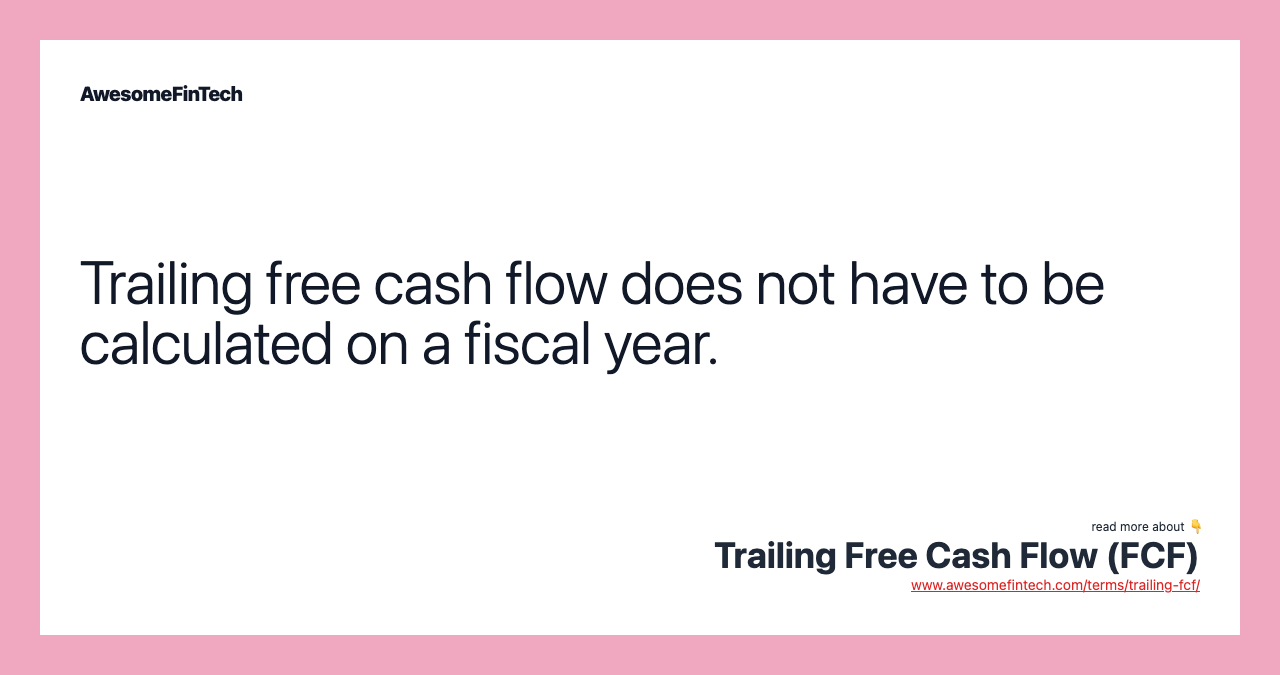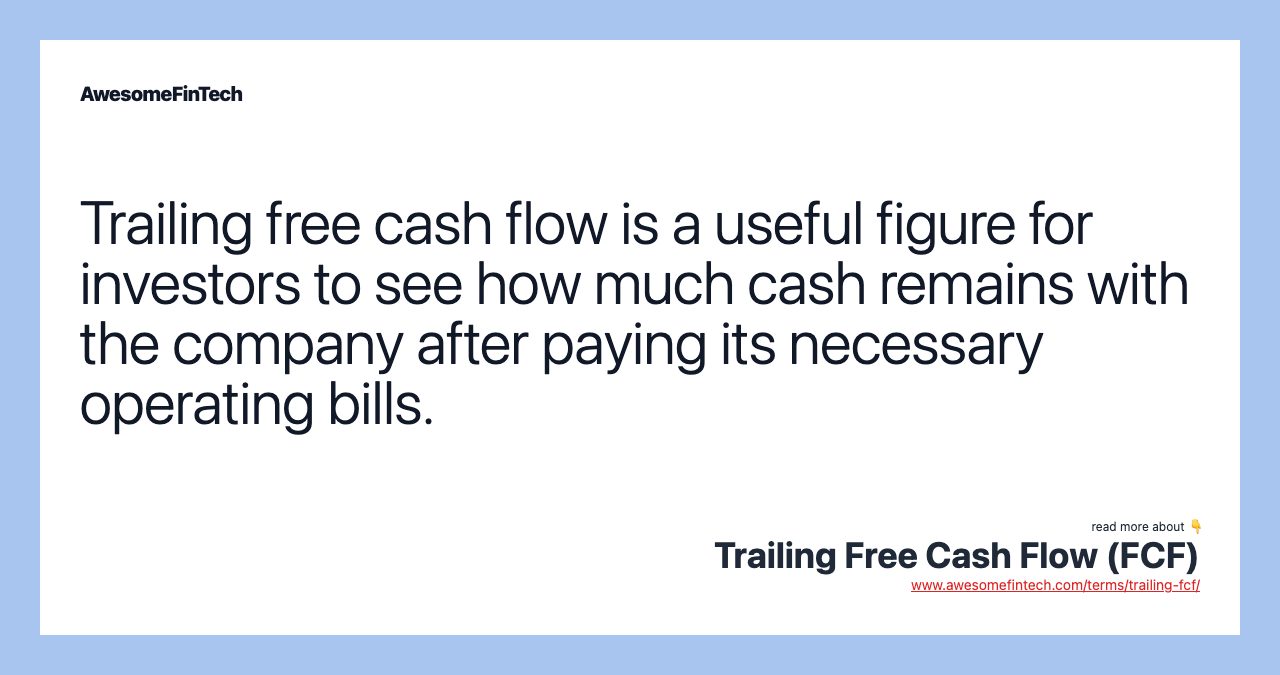Trailing Free Cash Flow (FCF)
Trailing free cash flow (FCF) measures a company's free cash flow over a period of time. Trailing free cash flow is used by investment analysts in calculating a company's free cash flow yield. Free cash flow (FCF) represents the cash a company generates after accounting for cash outflows to support operations and maintain its capital assets. Trailing free cash flow (FCF) presents the results of a company's cash inflows and outflows over a period of time, typically the prior twelve months.

What Is Trailing Free Cash Flow (FCF)?
Trailing free cash flow (FCF) measures a company's free cash flow over a period of time. The cash flow for the previous 12 months is the most commonly used figure. A trailing twelve month FCF does not have to coincide with a company's fiscal year end; it can be calculated at any point throughout the company's fiscal year using the financial data from the previous twelve months.




How Trailing Free Cash Flow (FCF) Works
Free cash flow (FCF) represents the cash a company generates after accounting for cash outflows to support operations and maintain its capital assets. Free cash flow is important to investors because it shows how much cash is left over and available to both creditors and investors after the company has spent money on its operational expenses and investments in capital. Trailing free cash flow measures the amount of leftover cash that has been generated by the company over the course of the past year.
The more free cash flow a company has, the more easily it can pay its creditors and investors and reinvest in itself. A strong trailing free cash flow multiple can be a sign that a stock is a good investment when combined with other signs of financial strength, such as increasing revenues, order and sales growth, controlled selling, general and administrative expenses costs (SG&A), increasing gross profits, and solid earnings per share.
Trailing free cash flow is used by investment analysts in calculating a company's free cash flow yield.
How to Calculate Trailing Free Cash Flow (FCF)
Trailing free cash flow can be calculated starting with the previous 12 months' earnings before interest and taxes (EBIT), then multiplying it by [1-(the firm's tax rate)]. Depreciation and amortization expenses, which were previously subtracted over the period and recorded on the income statement, are then added back to the product. Changes in working capital and capital expenditures incurred over the period are then subtracted.
Image by Sabrina Jiang © Investopedia 2021
Alternatively, FCF can be calculated from the Cash Flow from Operating Activities section of the Cash Flow Statement.
Image by Sabrina Jiang © Investopedia 2021
Related terms:
Amortization : Formula & Calculation
Amortization is an accounting technique used to periodically lower the book value of a loan or intangible asset over a set period of time. read more
What Is a Capital Asset?
A capital asset is an asset with a useful life longer than a year that is not intended for sale in the regular course of the business's operation. read more
Cash Flow From Operating Activities (CFO)
Cash Flow From Operating Activities (CFO) indicates the amount of cash a company generates from its ongoing, regular business activities. read more
Cash Flow
Cash flow is the net amount of cash and cash equivalents being transferred into and out of a business. read more
Earnings Before Interest and Taxes (EBIT) & Formula
Earnings before interest and taxes is an indicator of a company's profitability and is calculated as revenue minus expenses, excluding taxes and interest. read more
Earnings Per Share (EPS)
Earnings per share (EPS) is the portion of a company's profit allocated to each outstanding share of common stock. Earnings per share serve as an indicator of a company's profitability. read more
Fiscal Year (FY)
A fiscal year is a one-year period of time that a company or government uses for accounting purposes and preparation of its financial statements. read more
Free Cash Flow-to-Sales
Free cash flow-to-sales is a performance ratio that measures operating cash flows after the deduction of capital expenditures relative to sales. read more
Free Cash Flow (FCF)
Free cash flow represents the cash a company can generate after accounting for capital expenditures needed to maintain or maximize its asset base. read more
Free Cash Flow Yield
Free cash flow yield is a financial ratio that standardizes the free cash flow per share a company is expected to earn as compared to its market value per share. read more